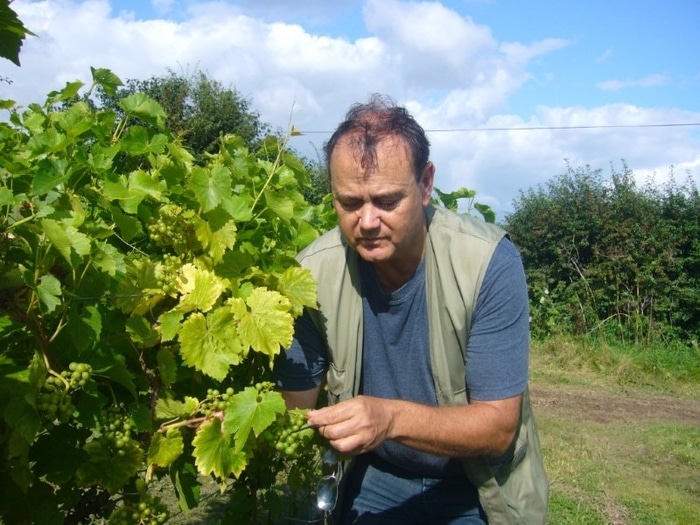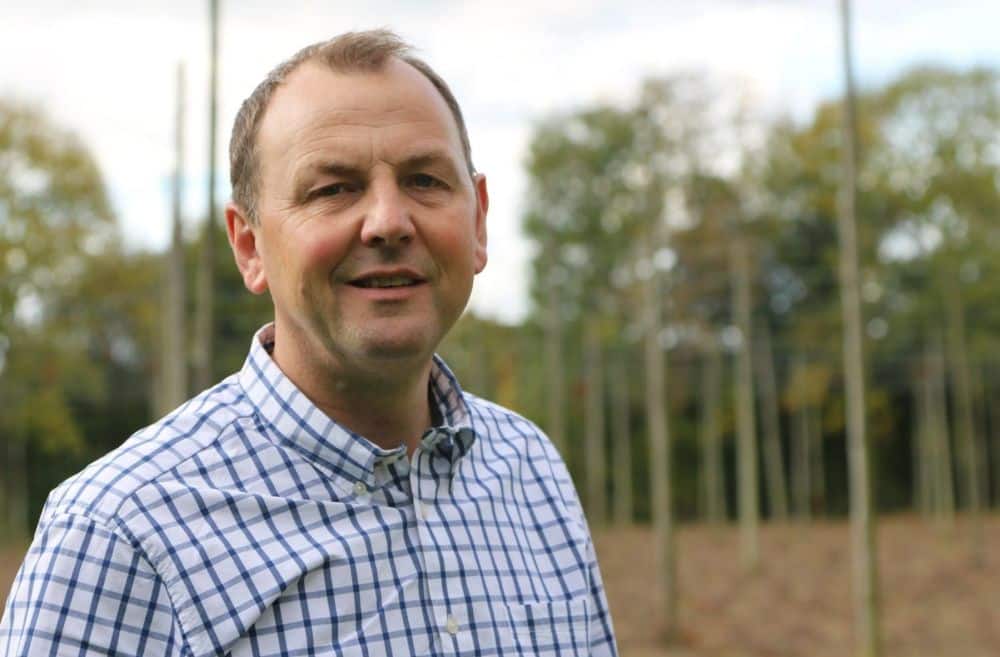Give new vines the best start – Vineyard – Chris Cooper, Rob Saunders
As the vine planting season approaches, Hutchinsons agronomists Rob Saunders and Chris Cooper examine how to ensure plants get off to a strong start ...
While good site selection is always fundamental to the success of any new vineyard, there are many other ways growers can promote strong establishment and give vines the best chance of fulfilling potential over future years.
Soil preparation and nutrition is the main focus and the best starting point is to assess soils before planting to identify potential structural or nutritional issues. TerraMap’s high definition remote sensing is an ideal tool for this, providing detailed analysis of 21 soil variables, including all main nutrients, pH, organic matter, available water and cation exchange capacity (CEC).

Chris Cooper
Such data is valuable for managing established vines too and it’s worth noting that Defra’s “Farming rules for water” now include a requirement to test soils at least every five years to inform nutritional strategies.
Indeed, two consecutive wet winters could have increased losses of some nutrients, such as potassium or nitrogen, on lighter, less nutrient-retentive soils with a low cation exchange capacity, so testing may be particularly beneficial.

Rob Saunders
While nitrogen requirements in established vines are relatively small, plant vigour can suddenly decline when levels get too low and once this happens it’s often too late to do much that season. Equally, nitrogen and phosphorus are key nutrients for early root development in new vines.
Phosphate can be easily locked up though, especially on more calcareous soils, so there may be a case for applying a targeted starter fertiliser at planting to ensure phosphate can be accessed by young roots. As nitrogen is more leachable, this should be applied once roots have got established and are able to take up nitrogen to supply the growing foliage. Any compaction or drainage issues must also be rectified before planting.
To plough or not?
Many growers will plough and cultivate sites to facilitate mechanical planting, but no-plough establishment is another option, particularly on steep sites prone to erosion or leaching or where land has been uncultivated for many years and has a good natural structure and biology. The drive to reduce CO2 emissions that result from soil disturbance such as ploughing is a further consideration.
Not ploughing does reduce the carbon footprint and help preserve natural soil structure and biota, but it is more laborious when vines have to be planted by hand into a narrow slit created by a single leg subsoiler. There is no opportunity to plough-down phosphate fertiliser before planting, although targeted application of a starter fertiliser into the planting zone should still be possible where required.
Uncultivated soils should have good nutrient reserves, however it’s worth noting the phosphate index in fields under long-term pasture can sometimes be quite low.
Keep weeds out
Vines are very uncompetitive, so it is vital to control weeds at all times, particularly when plants are establishing.
Plastic grow tubes are a popular option, providing protection from animal grazing and herbicide applications around young plants. However, weeds can grow up inside the tubes and the microclimate within them can sometimes exacerbate temperature fluctuations (hot and cold), potentially damaging young growth.
Mulches offer alternative weed suppression and add organic matter to the soil, however avoid applying organic mulches such as compost to new vines as microbial breakdown of carbon in the organic material uses up valuable nitrogen. This leaves less available to young plants with only limited “scavenging ability” from their small root system.
Biodegradable film around the vines, such as the one Hutchinsons supplies, can avoid this issue by providing a physical barrier to prevent weed growth over several seasons. Although the initial cost is more expensive than tubes, the number of herbicide applications is greatly reduced, early shoot selection is much easier and quicker to carry out, vines acclimatise faster, there is no requirement to remove tubes after two or three seasons, and there are no plastic disposal issues.
Wound protection
March is the final opportunity to apply wound protection to any larger reconstruction cuts that had to be made to older material (three years +) during pruning. Small cuts on material up to two years old generally do not need protection.
The biological product Vintec is the only approved wound protectant in the UK and is very effective when applied soon after the cut has been made, so there is still a window of opportunity for those who have delayed pruning to delay bud-burst as a frost mitigation strategy.